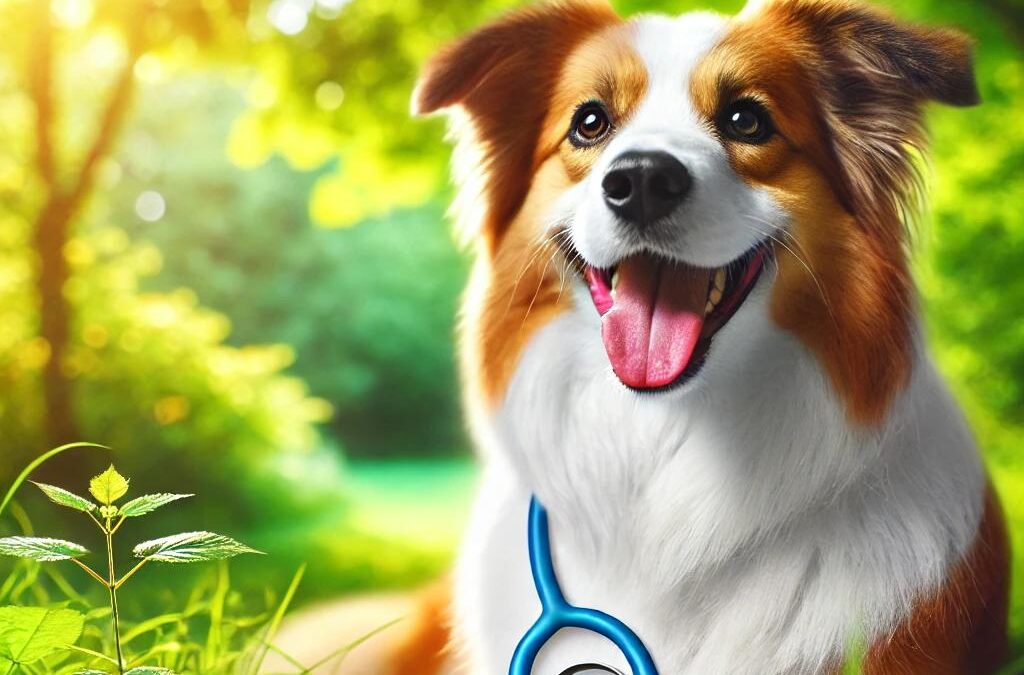
에 의해 TCMVET | 2024년 10월 10일 | 개 암 및 종양
척추 종양은 개에게 심각하지만 드문 건강 문제로, 상당한 불편함과 이동성 문제로 이어질 수 있습니다. 이러한 종양의 특성, 증상 및 사용 가능한 진단 방법을 이해하는 것은 반려동물 주인에게 필수적입니다. 이 가이드는 개의 척추 종양에 대한 개요와 개가 영향을 받았을 수 있다고 의심되는 경우 할 수 있는 일을 제공하는 것을 목표로 합니다.
척추종양이란?
척추 종양은 척수 자체에서 발생하거나 주변 뼈에서 발생하는 등 다양한 형태로 발생할 수 있습니다. 이러한 종양은 신경 조직, 뼈 또는 연골에서 발생할 수 있으며, 원발성 종양(척추에서 발생) 또는 이차성 종양(신체의 다른 부위에서 퍼지는 전이성 종양)으로 분류할 수 있습니다. 드물기는 하지만 이러한 종양은 반려견의 삶의 질에 상당한 영향을 미칠 수 있습니다.
증상 알아보기
개의 척추 종양 증상은 종종 척추간판질환(IVDD)과 같은 다른 척추 질환 증상과 겹칩니다. 주의해야 할 일반적인 징후는 다음과 같습니다.
- 지속적인 통증: 개는 우는 소리, 으르렁거리는 소리, 움직이거나 놀기를 꺼리는 등 고통의 징후를 보일 수 있습니다.
- 허약함이나 마비: 걷는 데 어려움이 있거나, 점프하는 데 어려움이 있거나, 서는 데 어려움이 있는 경우 사지가 약하다는 것을 나타낼 수 있습니다.
- 조정 상실: 개는 흔들리거나 균형을 유지하는 데 어려움을 겪을 수 있습니다.
- 행동 변화: 과민성 증가, 무기력함 또는 일상 활동 중단은 불편함의 신호일 수 있습니다.
진단: 척추 종양은 어떻게 발견되나요?
척추 종양을 진단하려면 증상이 IVDD 및 기타 척추 문제와 유사할 수 있으므로 고급 영상 기술이 필요합니다. 수의사는 다음과 같은 진단 방법을 사용할 수 있습니다.
- 엑스레이: 엑스레이는 뼈 구조에 대한 통찰력을 제공할 수 있지만, 연부조직 종양을 보여주지 못할 수도 있습니다.
- MRI(자기공명영상): MRI는 척추 종양을 시각화하는 가장 효과적인 방법으로, 뼈와 연조직의 세부적인 이미지를 제공합니다.
- CT 스캔: 컴퓨터 단층촬영(CT) 검사는 척추에 영향을 미치는 종양을 평가하는 데에도 도움이 될 수 있습니다.
정확한 진단을 위해서는 수의사 전문가의 종합적인 평가가 필요할 수 있습니다.
척추 종양 치료 옵션
척추 종양의 치료 계획은 종양 유형, 위치, 심각도를 포함한 다양한 요인에 따라 달라집니다. 가능한 치료 옵션은 다음과 같습니다.
- 외과적 제거: 종양이 수술 가능한 경우, 수술이 완화의 가장 좋은 방법일 수 있습니다.
- 방사선 치료: 이 치료법은 종양을 줄이고 척수에 가해지는 압력을 완화하는 데 도움이 될 수 있습니다.
- 화학 요법: 특정 유형의 종양의 경우, 종양의 성장과 확산을 조절하기 위해 화학요법이 권장될 수 있습니다.
반려동물 주인에게 개의 척추 종양을 이해하는 것은 매우 중요합니다. 증상을 조기에 인식하고 신속한 수의학적 치료를 받으면 결과가 크게 개선될 수 있습니다. 개의 불편함이나 행동의 변화를 발견하면 수의사와 상의하여 철저한 평가와 적절한 치료 옵션을 받으십시오. 정보를 얻고 사전 예방 조치를 취하면 개의 건강과 웰빙에 상당한 차이를 만들 수 있습니다.

에 의해 TCMVET | 2024년 10월 9일 | 개 암 및 종양
Veterinary oncology is evolving, with many pet owners seeking more holistic approaches to complement conventional cancer treatments. Holistic care focuses on the overall well-being of pets, incorporating natural therapies and lifestyle adjustments to enhance both physical and emotional health. By integrating nutrition, herbal medicine, stress management, and complementary therapies such as acupuncture and massage, holistic veterinary care offers a supportive environment for pets undergoing cancer treatment. This article explores the key components of holistic approaches in veterinary oncology and how they can be used to support cancer care for pets.
The Role of Holistic Care in Pet Cancer Treatment
Holistic care takes a whole-body approach, aiming to improve a pet’s quality of life by supporting the immune system, reducing inflammation, and managing the side effects of cancer treatments. Instead of focusing solely on the disease, holistic care considers the pet’s physical, emotional, and mental well-being. The ultimate goal is to strengthen the pet’s natural defenses, improve their quality of life, and potentially enhance the effectiveness of conventional cancer treatments.
Key Elements of Holistic Pet Cancer Care
- 영양과 다이어트Nutrition plays a central role in maintaining a pet’s overall health, especially during cancer treatment. A healthy, balanced diet can strengthen the immune system, improve energy levels, and promote faster recovery. For pets with cancer, certain dietary adjustments can help slow tumor growth and support their body’s healing process.
- High-quality protein: Protein is essential for rebuilding tissues and supporting immune function. High-quality animal proteins, like lean meats and fish, are ideal for pets with cancer.
- Anti-inflammatory foods: Ingredients like turmeric, fish oil (rich in omega-3 fatty acids), and leafy greens help reduce inflammation, which is often associated with cancer and its treatments.
- Low-carbohydrate diet: Since cancer cells feed on glucose, limiting carbohydrates in a pet’s diet can help slow the growth of tumors.
- Herbal Medicine for Immune SupportHerbal medicine has been used for centuries to boost the immune system and fight diseases, including cancer. Many holistic veterinarians incorporate herbal remedies into their treatment plans to support pets with cancer.
- 황기: This herb is known for its immune-boosting properties, helping the body produce more white blood cells to fight infections and potentially slow tumor growth.
- Medicinal mushrooms: Mushrooms such as turkey tail, reishi및 shiitake are rich in beta-glucans, which can enhance immune function and offer anti-cancer benefits.
- Milk thistle: Commonly used to support liver function, milk thistle can help detoxify the body and protect healthy cells from the damaging effects of cancer treatments.
- Acupuncture and Pain ManagementAcupuncture is an ancient practice that involves stimulating specific points on the body to balance energy and improve well-being. In veterinary oncology, acupuncture is often used to manage pain, improve digestion, stimulate appetite, and reduce inflammation.
- Acupuncture for pain relief: Pets with cancer often experience discomfort due to tumors or treatments such as chemotherapy. Acupuncture can help relieve pain and promote relaxation, improving their quality of life.
- Holistic pain management: In addition to acupuncture, other holistic therapies like massage and the use of CBD 오일 are gaining popularity for their ability to reduce pain and anxiety without the side effects of traditional pain medications.
- Stress Reduction and Emotional SupportPets with cancer can experience high levels of stress, which may weaken their immune system and affect their overall well-being. Managing stress and providing emotional support is essential for maintaining their health during cancer treatment.
- Calming routines: Keeping a consistent daily routine with regular feeding times, walks, and play sessions can help reduce anxiety for pets with cancer.
- Aromatherapy and essential oils: Safe essential oils such as lavender and chamomile can be used in diffusers or gentle massages to promote relaxation and ease stress.
- Reiki and energy healing: Reiki is a non-invasive therapy that uses energy healing to reduce stress and promote emotional balance. Many holistic veterinarians offer Reiki as part of a comprehensive cancer care plan.
- Hydration and DetoxificationProper hydration is crucial for pets undergoing cancer treatment, as it helps flush toxins from the body and supports kidney and liver function. Ensuring that pets have access to fresh water and incorporating hydration-rich foods such as bone broth can help maintain their energy levels and support detoxification.
- Physical Activity and MovementEven though cancer treatment can make pets feel lethargic, moderate physical activity is essential for maintaining muscle tone, improving circulation, and boosting their mood. Gentle walks or playtime can keep pets active and improve their overall well-being.
- Physical therapy: Tailored physical therapy exercises help pets with mobility issues stay active without overexerting themselves, promoting a faster recovery.
The Benefits of Integrating Holistic and Conventional Treatments
While holistic care offers many benefits, it should complement—not replace—conventional cancer treatments. Surgery, chemotherapy, and radiation remain essential tools in veterinary oncology, especially for aggressive cancers. By combining these treatments with holistic approaches, pet owners can enhance their pet’s overall health, reduce the side effects of treatment, and promote long-term wellness.
Holistic approaches in veterinary oncology provide valuable support for pets undergoing cancer treatment. By focusing on nutrition, herbal medicine, acupuncture, stress reduction, and physical activity, holistic care helps pets feel more comfortable, boosts their immune system, and improves their quality of life. Integrating these natural therapies with conventional veterinary oncology treatments offers a comprehensive, balanced approach that addresses both the cancer and the overall well-being of the pet. This combination empowers pet owners to provide their pets with the best possible care, improving their chances of recovery and a better quality of life.

에 의해 TCMVET | 2024년 10월 9일 | 개 암 및 종양
Mast cell tumors (MCTs) are among the most common skin tumors in dogs and can range from relatively benign to highly aggressive forms. A key factor in helping dogs with mast cell tumors manage their condition and improve their quality of life is strengthening their immune system. A strong immune system enables the body to fight off cancer cells more effectively and supports the dog’s overall health during treatment. In this article, we explore various natural remedies and care tips that can help boost a dog’s immunity, promoting better outcomes for dogs with MCTs.
개의 비만 세포 종양에 대한 이해
Mast cell tumors arise from mast cells, which are part of a dog’s immune system and play a role in allergic responses. These tumors can appear as lumps on the skin or even in internal organs, and their behavior can be unpredictable. Standard treatments often include surgery, radiation therapy, and chemotherapy, but supporting the immune system naturally can play an equally important role in a dog’s fight against MCTs.
Top Ways to Strengthen a Dog’s Immune System with MCTs
- Immune-Boosting DietThe foundation of a strong immune system is proper nutrition. A balanced diet rich in antioxidants, essential fatty acids, and nutrients is essential for boosting the immune system in dogs with mast cell tumors.
- High-quality proteins: Lean meats and fish provide the building blocks for a healthy immune system, helping the body repair tissues and fight off cancer cells.
- Antioxidant-rich foods: Ingredients like spinach, carrots, blueberries, and broccoli help neutralize free radicals and reduce oxidative stress, which can contribute to tumor growth.
- 오메가-3 지방산: Found in fish oil and flaxseed, omega-3s have anti-inflammatory properties and can help regulate the immune response. They also support skin health, which is important for dogs with skin tumors.
- Natural Supplements for Immune SupportSupplements can provide an extra boost to the immune system, especially when targeted for cancer support. Some of the best natural supplements for dogs with mast cell tumors include:
- Medicinal mushrooms: Mushrooms such as turkey tail, reishi및 shiitake are known for their immune-boosting and anti-cancer properties. These mushrooms stimulate immune cells, helping the body recognize and fight cancer cells.
- 커큐민: Derived from turmeric, curcumin is a powerful antioxidant and anti-inflammatory agent that can help reduce tumor growth and support the immune system.
- 프로바이오틱스: A healthy gut is essential for a strong immune system. Probiotics help maintain a balanced microbiome, which is directly linked to better immune function.
- Exercise for ImmunityRegular, moderate exercise is a simple yet effective way to improve a dog’s immune system. Exercise stimulates circulation, helping immune cells move throughout the body more efficiently. Short daily walks, playtime, and interactive activities can help keep your dog physically fit and mentally engaged.
- 스트레스 감소Stress can weaken a dog’s immune system and exacerbate health conditions, including mast cell tumors. Reducing stress and promoting relaxation is crucial for boosting immunity.
- Routine and stability: Maintaining a consistent routine with regular feeding times, walks, and play can help reduce anxiety in dogs with cancer.
- Calming supplements: Natural calming aids like L-theanine, valerian root및 CBD 오일 can help lower stress levels, promoting relaxation and better immune function.
- 마사지 치료: Gentle massages can help your dog relax, improve circulation, and reduce stress. It’s also a way to bond with your pet, offering comfort and emotional support.
- Herbal Remedies for Immune HealthHerbal medicine has been used for centuries to support health and immunity. Certain herbs are particularly effective for dogs with cancer, offering natural ways to stimulate the immune system.
- 황기: Known for its immune-boosting properties, astragalus can enhance the production of white blood cells, which are crucial for fighting infections and cancer.
- 에키네시아: This herb stimulates the immune system and helps the body fight infections, which is especially beneficial for dogs undergoing cancer treatment.
- Milk thistle: Often used to support liver function, milk thistle helps detoxify the body and protect cells, aiding in the elimination of toxins that can weaken the immune system.
- 전체론적 치료법In addition to diet and supplements, holistic therapies can play a significant role in improving immune function in dogs with mast cell tumors. Integrating these therapies into a dog’s care plan can provide additional support for their overall health.
- 침술: Acupuncture is used in veterinary care to reduce pain, enhance energy flow, and support the immune system. It’s especially useful for dogs with cancer as it can also help alleviate symptoms from conventional treatments like chemotherapy.
- Reiki: Reiki is an energy healing practice that can reduce stress, promote relaxation, and help the body heal itself. Many holistic veterinarians offer reiki as part of their integrative care for dogs with cancer.
- Adequate HydrationHydration is often overlooked but is essential for maintaining a healthy immune system. Ensure your dog has access to clean, fresh water at all times, and consider adding moisture-rich foods like bone broth to their diet. Proper hydration helps flush toxins from the body, keeping the immune system functioning optimally.
Integrating Immune Support with Conventional Treatments
Strengthening a dog’s immune system should complement, not replace, conventional cancer treatments. Surgery, chemotherapy, and radiation are often necessary to manage mast cell tumors, but boosting immunity can enhance treatment outcomes. Many integrative veterinarians recommend a combined approach, using immune-boosting strategies to improve recovery and quality of life while targeting cancer cells with more aggressive treatments.
Boosting immunity in dogs with mast cell tumors is a vital part of their overall care. By focusing on a nutrient-rich diet, natural supplements, stress management, and holistic therapies, you can support your dog’s immune system, improving their resilience and quality of life. Combining these natural methods with conventional cancer treatments ensures a balanced approach to managing mast cell tumors, helping your dog fight cancer from the inside out.

에 의해 TCMVET | 2024년 10월 9일 | 개 암 및 종양
Canine skin cancer is one of the most common types of tumors found in dogs. With advances in veterinary medicine, new horizons have emerged for treating this condition. Early diagnosis, along with innovative treatments that integrate both conventional medicine and alternative approaches, can significantly improve outcomes for affected pets. This article explores modern therapies and traditional methods that can be effective in managing canine skin cancer, offering pet owners valuable insights into comprehensive care options.
개 피부암 이해
There are several types of skin cancers that can affect dogs, including mast cell tumors, melanoma, and squamous cell carcinoma. While some skin tumors are benign, others can be aggressive and metastasize to other parts of the body. Early detection through regular skin checks, biopsies, and diagnostic imaging is critical to improve the chances of successful treatment.
Modern Treatment Options
- 수술
Surgery is often the first line of defense in treating canine skin cancer. If detected early, surgical removal of the tumor can be highly effective, especially for localized cases. However, in advanced stages, surgery may be combined with other treatments such as radiation or chemotherapy to target metastasized cancer cells.
- 화학 요법 및 방사선
Chemotherapy can be useful in targeting cancer cells that may remain after surgery or that have spread to other organs. Radiation therapy, on the other hand, is an option for tumors that are difficult to remove surgically, such as those near sensitive areas.
- 면역 요법
Immunotherapy has shown great promise in treating canine skin cancer by harnessing the dog’s immune system to fight cancer cells. Monoclonal antibodies and cancer vaccines are being researched to target specific cancer types like melanoma.
Integrating Traditional Chinese Medicine (TCM) in Treatment
In recent years, more pet owners and veterinarians have turned to Traditional Chinese Medicine (TCM) as a complementary therapy for managing canine skin cancer. TCM focuses on balancing the body’s energies, boosting immune function, and enhancing the overall quality of life.
- 약초
Chinese herbs such as 쓰촨 로바지 (Ligusticum wallichii) and 현탁증 (Figwort) have been studied for their ability to promote blood circulation, reduce inflammation, and prevent tumor growth. These herbs are commonly included in formulations designed to alleviate cancer-related symptoms and enhance the immune response in dogs.
- 침술
Acupuncture is another TCM practice that has been shown to reduce pain and inflammation in dogs with cancer. It can also improve appetite and energy levels, making it a useful adjunct therapy for pets undergoing conventional cancer treatments like chemotherapy.
- 다이어트와 영양
Nutritional therapy plays a vital role in cancer management. Integrating anti-inflammatory foods such as omega-3 fatty acids, turmeric, and certain medicinal mushrooms like reishi into a dog’s diet can help strengthen their immune system and fight against cancer growth.
The Future of Canine Skin Cancer Treatment
With ongoing research and the growing interest in integrative medicine, the future of canine skin cancer treatment looks promising. Combining conventional treatments like surgery, radiation, and chemotherapy with complementary therapies like TCM and nutrition offers a holistic approach to managing the disease. This integrated care not only helps reduce tumor growth but also enhances a dog’s overall well-being, potentially prolonging life expectancy.
As canine skin cancer continues to affect many dogs worldwide, innovative treatment strategies that merge modern medical advances with traditional therapies offer a comprehensive solution for pet owners. Regular veterinary checkups, early detection, and personalized care plans that include surgery, immunotherapy, and TCM can greatly improve the chances of managing the condition effectively. For pet owners seeking to provide their dogs with the best possible care, exploring these new horizons in skin cancer treatment is an essential step toward a healthier future for their furry companions.

에 의해 TCMVET | 2024년 10월 8일 | 개 암 및 종양
편평세포암(SCC)은 개, 특히 밝은 피부, 얇은 털 또는 색소 결핍이 있는 개에게 영향을 미칠 수 있는 피부암의 한 형태입니다. 태양 노출, 특히 유해한 자외선(UV)은 개에서 SCC가 발생하는 데 중요한 요인입니다. 이 글에서는 UV 방사선이 밝은 색소 침착이 있는 개에게 어떤 영향을 미치는지, SCC가 어떻게 발생하는지, 그리고 이 심각한 피부 질환으로부터 애완동물을 보호하는 방법에 대해 알아보겠습니다.
개의 편평 세포 암종은 무엇입니까?
편평세포암은 피부나 점막의 편평세포에서 발생하는 악성 종양입니다. 이 유형의 암은 종종 햇빛 노출과 관련이 있으며, 이는 피부 세포의 DNA를 손상시켜 암성 종양을 형성할 수 있습니다. 편평세포암은 주로 코, 배, 귀와 같이 털이 거의 없거나 전혀 없는 부위에서 발생합니다. 신체의 다른 부위로 퍼질 가능성은 낮지만 국소적으로 침습적이어서 근처 조직에 상당한 손상을 입힐 수 있습니다.
밝은 색소를 가진 개에 대한 자외선 복사의 영향
밝은 색 털, 얇은 털 또는 색소 결핍(백색증 개 등)이 있는 개는 특히 자외선의 영향에 취약합니다. 색소는 유해한 자외선을 흡수하고 반사하는 자연적 보호 장벽 역할을 합니다. 그러나 색소가 최소인 개에서는 이 보호가 상당히 감소하여 자외선이 피부 깊숙이 침투하여 세포 손상을 일으키고 편평세포암의 위험을 증가시킵니다.
- 위험에 처한 품종
특정 품종은 색소가 밝고 털이 없기 때문에 SCC에 더 취약합니다. 불테리어, 달마시안, 복서, 비글과 같은 품종은 털이 덜 덮인 지역에서 SCC가 발병하기 쉽습니다. 차이니스 크레스티드와 같은 털이 없는 품종도 피부가 노출되어 위험이 높습니다.
- 일반적으로 영향을 받는 영역
편평세포암은 일반적으로 햇빛에 더 많이 노출되는 신체 부위에서 발생합니다. 여기에는 귀, 코, 눈꺼풀, 복부와 같은 부위가 포함됩니다. 특히 강렬한 햇빛이 드는 지역에서 야외에서 상당한 시간을 보내는 개는 이러한 부위에서 SCC가 발생할 위험이 더 높습니다.
태양 노출이 편평세포암을 유발하는 방식
자외선(UV)에 장시간 노출되면 개에서 편평세포암이 형성될 수 있습니다. UV 방사선은 피부 세포의 DNA를 손상시켜 비정상적인 세포 성장을 유발하는 돌연변이를 일으킵니다. 시간이 지남에 따라 이러한 손상이 축적되어 암성 종양이 발생할 수 있습니다. 색소가 밝은 개는 색소가 어두운 개에게 있는 자연적인 UV 보호 기능이 없기 때문에 더 취약합니다.
Preventing Squamous Cell Carcinoma in Dogs
- Limit Sun Exposure
개가 직사광선에 노출되는 것을 줄이는 것은 SCC를 예방하는 가장 효과적인 방법 중 하나입니다. 자외선이 가장 강한 오전 10시에서 오후 4시 사이, 즉 태양이 가장 강한 시간대에 개를 실내에 두십시오. 개가 밖에서 시간을 보내는 것을 좋아한다면 그늘진 곳에 갈 수 있도록 하고 장시간 햇빛에 노출되는 것을 피하십시오.
- 반려견에게 안전한 자외선 차단제를 사용하세요
밝은 피부나 얇은 털을 가진 개에게 노출된 부위에 개에게 안전한 자외선 차단제를 바르면 유해한 자외선으로부터 보호하는 데 도움이 될 수 있습니다. 햇볕에 타기 쉬운 코, 귀, 배와 같은 부위에 집중하세요. 사람용 자외선 차단제에는 개에게 독성이 있는 성분이 포함될 수 있으므로 반려동물용으로 특별히 제조된 자외선 차단제를 선택하세요.
- 보호 복
반려견을 위한 UV 차단 의류에 투자하면 보호력을 한 겹 더 제공할 수 있습니다. 가볍고 통기성이 좋은 반려견용 셔츠, 모자, 바이저는 민감한 부위를 직사광선으로부터 보호할 수 있습니다. 이러한 보호용 의류는 색소 결핍이 있는 반려견이나 장시간 야외에서 지내는 반려견에게 특히 유용합니다.
- 정기적인 피부 검진
편평세포암의 조기 발견은 성공적인 치료의 핵심입니다. 덩어리, 혹 또는 치유되지 않는 궤양을 포함하여 개의 피부를 정기적으로 검사하여 변화가 있는지 확인하십시오. 편평세포암은 종종 딱딱하고 붉은 병변 또는 통증이 생길 수 있는 궤양 부위로 나타납니다. 이상이 발견되면 가능한 한 빨리 수의사와 상담하십시오.
편평세포암 치료 옵션
- 수술
종양의 외과적 제거는 개에서 편평세포암에 대한 가장 일반적인 치료법입니다. 조기에 발견하고 명확한 여백을 둔 외과적 절제는 암이 주변 조직으로 퍼지는 것을 막을 수 있습니다. 종양의 크기와 위치에 따라, 특히 얼굴이나 입과 같은 민감한 부위의 경우 더 복잡한 수술이 필요할 수 있습니다.
- 방사선 치료
완전한 수술적 제거가 불가능한 경우, 방사선 요법을 사용하여 암 세포를 표적으로 삼고 종양 성장을 줄일 수 있습니다. 방사선은 수술하기 어려운 부위의 종양이나 안전하게 제거하기에는 종양이 너무 큰 경우에 종종 권장됩니다.
- 냉동요법
비정상 조직을 동결시키고 파괴하는 기술인 극저온 요법은 더 작은 SCC 종양을 치료하는 데 사용할 수 있습니다. 이 치료법은 특히 피부 표면에 위치한 종양에 효과적입니다. 초기 단계의 SCC에 권장될 수 있는 최소 침습적 옵션입니다.
영양과 보충제로 전반적인 건강 지원
의학적 치료 외에도 영양이 풍부한 식단을 제공하면 반려견의 전반적인 건강과 면역 체계를 지원할 수 있습니다. 블루베리, 시금치, 당근과 같은 항산화제가 풍부한 음식은 산화 스트레스에 맞서고 피부 건강을 유지하는 데 도움이 될 수 있습니다. 생선 기름에서 발견되는 오메가-3 지방산은 염증을 줄이고 더 건강한 피부를 촉진할 수 있습니다. 강황과 밀크시슬을 포함한 허브 보충제는 추가적인 항염 효과를 제공할 수 있습니다.
일광 노출과 색소 결핍은 개에서 편평세포암의 발병에 중요한 역할을 합니다. 색소가 옅거나 털이 없는 품종은 이 형태의 피부암에 특히 취약합니다. 반려동물 주인은 일광 노출을 제한하고, 자외선 차단제를 사용하고, 보호용 의복을 제공함으로써 반려견의 편평세포암 발병 위험을 크게 줄일 수 있습니다. 정기적인 피부 검사와 신속한 수의학적 치료는 조기 발견과 성공적인 치료에 필수적입니다. 올바른 예방 조치를 취하면 반려견을 자외선의 해로운 영향으로부터 보호하고 건강하고 암 없는 삶을 살 수 있습니다.

에 의해 TCMVET | 2024년 10월 8일 | 개 암 및 종양
Fibrosarcoma is a type of cancer that affects the fibrous connective tissue in pets, particularly in dogs and cats. Although fibrosarcomas are aggressive and invasive, early diagnosis and a well-planned treatment strategy can significantly improve your pet’s outlook. Alongside conventional treatments like surgery, radiation, and chemotherapy, adopting a holistic approach can greatly support your pet’s overall health and quality of life. This article explores the prognosis and long-term care options for pets diagnosed with fibrosarcoma, focusing on natural care and lifestyle changes.
반려동물의 섬유육종 이해
Fibrosarcomas are malignant tumors that can occur in various parts of the body, such as the skin, mouth, and internal organs. These tumors tend to grow quickly and invade surrounding tissues, making complete removal through surgery difficult. However, despite their aggressive nature, fibrosarcomas rarely metastasize (spread to other organs), which can give hope for a positive outcome with proper management.
Prognosis of Fibrosarcoma
The prognosis for pets diagnosed with fibrosarcoma depends on several factors:
- Tumor Location and Size
Tumors in more accessible locations like the skin tend to have a better prognosis, especially if they are detected early and surgically removed. Larger tumors or those in challenging areas such as the mouth or near vital organs may be harder to treat and could have a more guarded prognosis.
- Grade of the Tumor
Low-grade fibrosarcomas, which grow more slowly and are less aggressive, often carry a better prognosis compared to high-grade tumors, which are more likely to grow rapidly and recur.
- Surgical Success and Treatment
Achieving clear margins during surgery (removing the tumor with a surrounding area of healthy tissue) is crucial for reducing the risk of recurrence. In cases where clean margins are difficult to achieve, radiation therapy and chemotherapy may be necessary as follow-up treatments.
Long-Term Management of Fibrosarcoma in Pets
- Surgical Removal and Post-Operative Care
Surgery remains the most effective treatment option for fibrosarcoma, especially when the tumor is caught early. Post-operative care involves closely monitoring your pet for any signs of recurrence, ensuring they heal properly, and managing pain effectively. Pets may also require additional treatments, such as radiation or chemotherapy, to eliminate any remaining cancer cells and prevent regrowth.
- Anti-Inflammatory and Nutrient-Dense Diet
A well-rounded diet that supports the immune system can play a significant role in managing fibrosarcoma. Omega-3 fatty acids, found in fish oil, have anti-inflammatory properties and can help reduce tumor inflammation. Antioxidant-rich foods, such as leafy greens, blueberries, and carrots, can also help fight oxidative stress and improve your pet’s overall health. A diet low in carbohydrates and high in high-quality proteins may also help reduce the risk of tumor growth, as cancer cells thrive on sugar.
- Herbal Supplements for Support
Holistic approaches, such as Traditional Chinese Medicine (TCM), can complement conventional treatments for fibrosarcoma. Herbs like 사천 로바쥬 (Chuanxiong) promote blood circulation and help reduce inflammation, which can benefit pets with fibrosarcomas. 현탁증 (Figwort) has anti-inflammatory and detoxifying properties that may help slow tumor growth. Always consult a holistic veterinarian before incorporating herbs into your pet’s care plan to ensure they are safe and effective.
- Pain Management and Quality of Life
Managing your pet’s comfort is essential in the long-term care of fibrosarcoma. Pain relief medications, anti-inflammatories, and alternative therapies such as acupuncture and massage can help alleviate discomfort and improve your pet’s quality of life. CBD oil has also been used in some pets to reduce pain and anxiety associated with cancer, although it should be used under the supervision of a veterinarian.
- Exercise and Maintaining Mobility
While your pet’s activity levels may need to be adjusted based on their condition, regular movement is important to maintain their strength and mobility. Gentle walks or play sessions can keep your pet active without overexerting them, helping to prevent muscle loss and maintain their overall health.
- Regular Monitoring and Follow-Up Care
Fibrosarcoma has a high recurrence rate, so regular follow-up visits with your veterinarian are essential. Routine imaging tests such as X-rays, ultrasounds, or CT scans may be recommended to check for tumor regrowth. Early detection of any recurrence allows for timely intervention and improves the chances of managing the cancer effectively.
Holistic Approach to Fibrosarcoma Care
Combining conventional cancer treatments with holistic care can improve the overall well-being of your pet. A holistic approach includes not only addressing the physical aspects of fibrosarcoma but also considering the emotional and mental health of your pet. Providing a stress-free environment, offering natural supplements, and maintaining open communication with your veterinarian ensures that your pet receives comprehensive care.
While fibrosarcoma is an aggressive form of cancer, a combination of early diagnosis, surgery, follow-up treatments, and holistic care can help manage the disease and improve your pet’s quality of life. A nutrient-dense diet, herbal supplements, pain management, and regular monitoring are crucial for long-term care. By working closely with your veterinarian and incorporating a holistic approach, you can provide the best possible support for your pet’s battle with fibrosarcoma.







